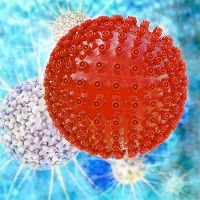Article
Post-Herpetic Neuralgia Often Leads to Future Chronic Pain
Author(s):
After a period of 6 months from post herpetic neuralgia onset, patients often report chronic pain, according to a study conducted in Rome, Italy.

Patients with acute zoster and neuropathic pain lasting longer than 6 months have a high probability of experiencing chronic pain in subsequent months and years, according to research published in BMC Infectious Diseases.
Researchers from the Pain Clinic of the Policlinico Tor Vergata in Rome, Italy observed 85 immunocompetent patients with a clinical diagnosis of post-herpetic neuralgia (PHN) between January 1, 2009 and November 15, 2010. All participants were Caucasian Italian outpatients at the Pain Clinic; the group was split with 50 females (aged 47-92 years) and 35 males (aged 41-90 years). Patients were initially interviewed by physicians to obtain data pertaining to demographics, their zoster clinical history, and were blood tested for further research.
Questionnaires were also completed by the participants to assess the neuropathic nature of their pain and their overall health status. A 1-year follow up was scheduled, and patients were visited regularly in intervals of at least 3 months.
At baseline, all patients had been diagnosed with acute zoster at least 6 months prior, but were still experiencing intense pain. The researchers noted pain was significantly reduced at baseline if antivirals were used within 72 hours from rash onset. However, only 2.6 percent of patients were treated with antivirals during acute zoster, but 18.6 percent of the untreated patients had continued neuropathic pain at the 1-year follow up. This was true even though the 2 groups were similar at baseline. Adverse health events were observed in a range of 15.3 to 28.8 percent of the patients studied.
Pain after zoster rash onset lasted between 1 and 3 days for most patients. Rash locations were most often thoracic (37 patients), followed by cranial (19 patients), lumbar (19 patients), and cervical (10 patients). In 87 percent of patients, the intensity of the rash was moderate to severe, with the remaining 13 percent reporting mild intensity. Half of the patients had received specific antiviral therapy prescriptions at the zoster episode. At baseline, the majority of patients reported intense or very intense pain, which were found equally among the 2 gender groups. The median duration of pain was found to be longer in women than men.
“Our results clearly indicate that patients who still have significant neuropathic pain 6 months after the acute episode of zoster, have a high probability of suffering from chronic pain in the subsequent months/years,” the authors wrote.
The researchers further explain these results are in line with prior studies. Specifically, a prior study observing 219 patients conducted by the researchers found older age, greater acute pain intensity, greater rash extent, and longer duration of pain are independent risk factors in the development of PHN. However, this study did not predict female gender as an indicator for PHN.
In the future, the researchers hope to expand upon their studies to gain insight into the relationship between PHN and chronic pain, and its availability and efficacy for treatments.





